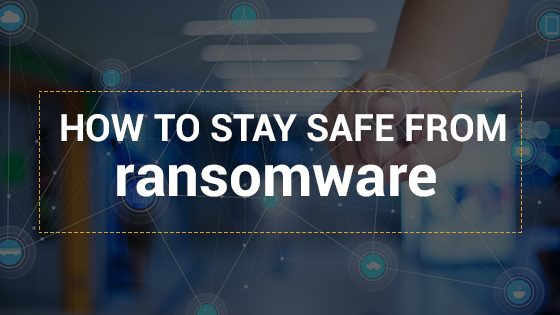How to stay safe from ransomware attacks
Ransomware is a serious threat. Only last week nearly 200.000 systems were affected in one of the most brutal attacks in the recent years. Regardless of the type of data you use, or type of company you are part of, you can be affected, and your data can be lost in a few seconds. The Ransomware, known as WannaCry (aka WanaCrypt0r 2.0, WanaCrypt, WCry,CryptoLocker), spreads over a network quickly and maliciously. As such, you should ask yourself:
- Does your network (routers, firewalls etc.) have the latest protections?
- Have you explored additional spam filtering capabilities?
- Do you have a comprehensive Disaster Recovery Plan?
- Are your employees saving business critical files on their desktop; unsecured, not backed-up, and vulnerable to ransomware?
If your answer is no to any or all the above questions, you can be at risk. Let us help you stay safe, call toll free ComputerSupport.com to find out more at 855-397-8776.
Ransomware is a type of virus that holds your data hostage for money. Basically, it encrypts your files and to recover them, you must pay the amount requested by the hackers.
This is how it works: if your system is infected, you receive a notification that all your data is encrypted, and to un-encrypt it, you must pay a certain amount for a decryption tool. With the popularity of digital currency such as Bitcoin, ransomware has become a serious threat for any computer, either a personal one, or part of a network, business, or enterprise. Bitcoins are untraceable, which makes them perfect for ransomware.
Ransomware first appeared in 2013 and is very different from other types of viruses, since absolutely anybody can be affected, regardless of the type of data they store. It directly asks you for money instead of just causing financial damage. When you pay the ransom money, you will get the decryption tool back even though the hackers could have simply run away with your money. The encryption used is usually 128-bit or higher, which means there’s practically no way for people to get their data back unless they pay up. If you have a backup, then you must restore backups. If you don’t have a backup, then the only choice you have is to pay the ransom or say goodbye to your data.
According to theguardian.com, the ransomware, also known as “WanaCryt0r”, “WeCry”, “WanaCrypt” or “WeCrypt0r”, used a vulnerability in a Windows Server component to spread within corporate networks. The weakness was first revealed to the world as part of a massive dump of software vulnerabilities discovered by the NSA and then stolen by a group of hackers calling themselves “Shadow Brokers”.
Microsoft fixed the flaw shortly before the stolen data was published, leading many to conclude it had been surreptitiously tipped-off by the security agency about the existence of the flaw.
How to stay safe from ransomware
Perform all updates for Microsoft Windows, including security
wordfence.com advises that you install the patch that Microsoft recently released to block the specific exploit that the WannaCry ransomware is using. You can find instructions on this page in the Microsoft Knowledge Base. You can also directly download the patches for your OS from the Microsoft Update Catalog. In case you are using an unsupported version of Windows like Windows XP, Windows 2008 or Server 2003, you can get the patches for your unsupported OS from the Update Catalog. We do recommend that you update to a supported version of Windows as soon as possible.
Use an anti-virus protection for your system
Antivirus programs can stop ransomware from being downloaded onto computers and can find it when it is. Most antivirus programs can scan files to see if they might contain ransomware before downloading them. They can block secret installations from malicious adverts when you’re browsing the web, and look for malware that may already be on a computer or device.
Be wary of the e-mail attachments
ransomware can easily be installed via e-mail, if you are not paying attention to the files received by e-mail that you open and run. ransomware uses e-mail as a major way to spread, so stay focused on malicious email attachments.
Limit the rights of your employees
Any organization which gives every user admin rights is an organization that needs better IT policies. Users should have access only to the tools they need and use. By being willing to forego security measures to gain speed in day to day work activities, you could be subject to data loss.
Perform backups and keep them safe
If you perform regular backups of your data, then even if you do become a victim of ransomware, you can simply restore everything from backup without a hassle. However, you should keep in mind that even backups ca be affected by ransomware if they are kept in the same system as your general data. The only way to truly keep yourself safe from ransomware is through backups that are separate from your main system. This way, the virus will have no way of reaching the backups. Even cloud backups can be infected, though if your backup service keeps older versions of the backups, you should be safe.
If you think you need assistance, contact us today!



